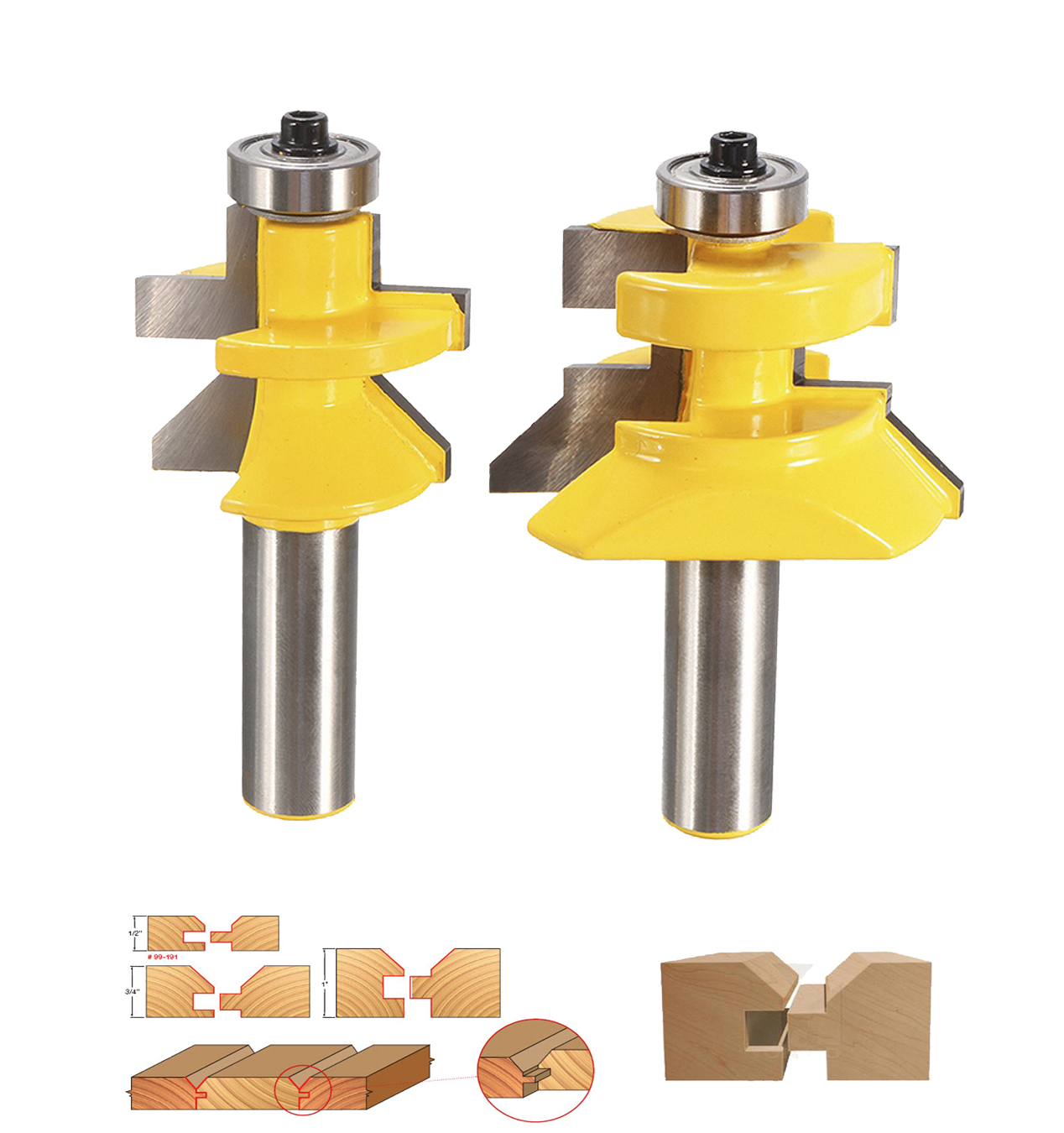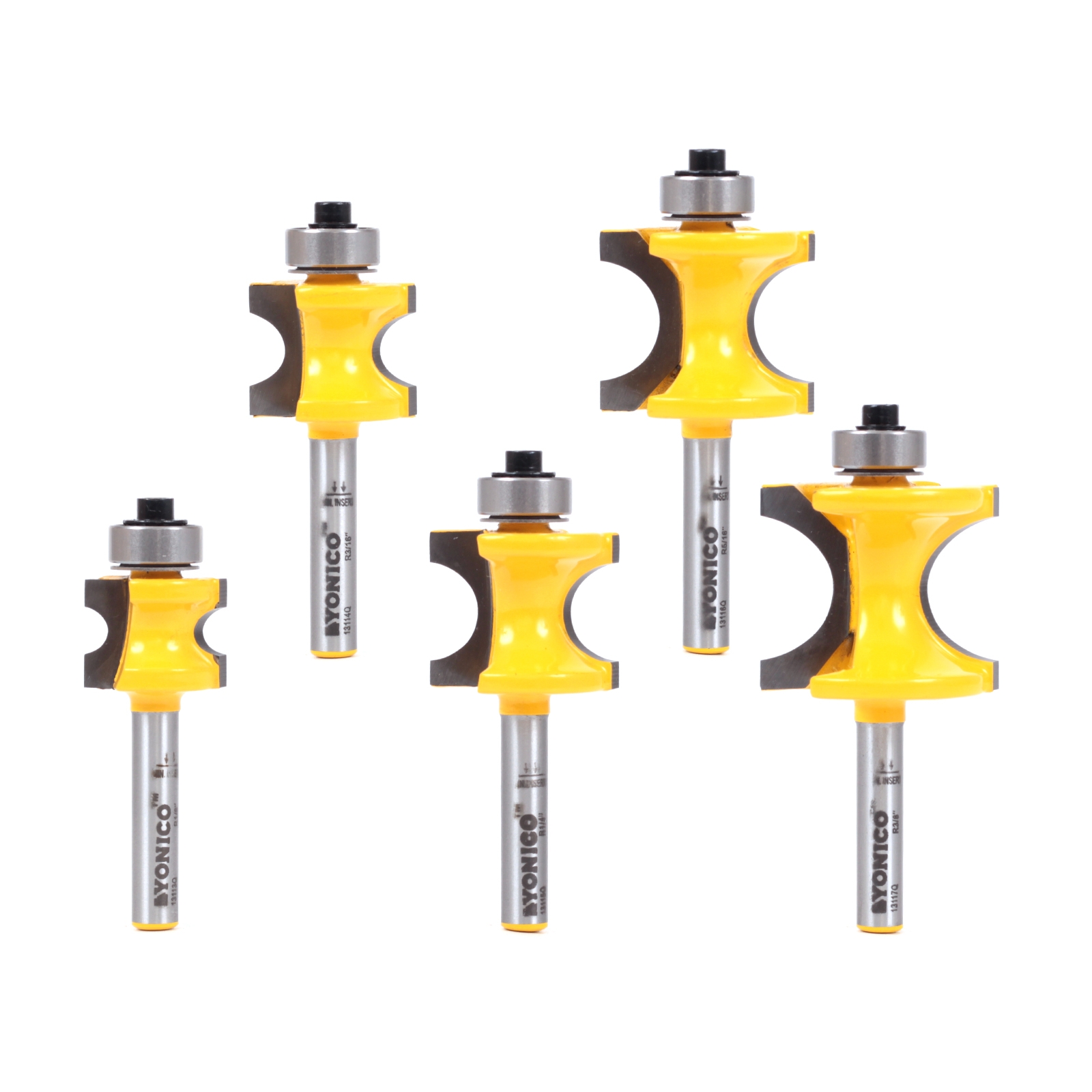

For the examples below, I'll assume you only have 1 router. However, the reference surfaces might differ.ĭepending on which bits you're using, you should have at least 2 routers, one set up to cut the groove and another one (or two) set up to cut the tongue. If you can measure the amount of error in your first cut, and if you can measure changes to the bit height, then your second test cut should be spot on.Īlthough you're using a tongue and groove set, the process would be very similar with other bits. If your router doesn't have something like that, you can also use a tool like a dial indicator to measure changes.

A Porter Cable 690, for example, has a collar with a series of tick marks that correspond to 1/128". It might help to point out that most routers have some means of measuring changes in height.

TONGUE AND GROOVE ROUTER BITS INSTALL
Install the cutter and, with the test piece on the base plate, adjust the height until you can turn the cutter by hand through the test piece with as little resistance as possible. For either cutter, you can use the corresponding test piece to set the height. Now you've got two test pieces that you can use as gauges in the future. Once you're happy with the result, label the last test from the second cutter as you did for the first.Adjust the bit height according to the error.anything that'll let you measure small distances accurately. Measure the error using a dial indicator or a set of digital/dial/vernier calipers, i.e.Switch to the other cutter, using the first test piece to eyeball the height.Make sure that you mark the side of the piece that was against the router's base plate. Label this piece so that you'll remember that it's not scrap. Install one cutter to a height that looks right for your lumber.How can I easily install the bits in the router at the correct height?


 0 kommentar(er)
0 kommentar(er)
